About the Author
Born and raised in Berlin, Germany, Kat Morgenstern discovered her passion for travel early on. At the tender age of 18, she left Germany to begin a journey that has taken her halfway around the world and is still in progress today. Professionally, Kat is a grassroots herbalist, ethnobotanist, writer and ecotravel professional. She is the founder and director of Sacred Earth, a network and educational resource for plant people of all species, and of Sacred Earth Travel, a dedicated online ecotravel consultancy.
Having spent most of her adult life in the UK, the US and France, she currently makes her home in Germanys southern Black Forest, where she has been surprised to find not only rewarding vistas and a great variety of ecosystems, but an innovative model of sustainable tourism development.
Other Cicerone guides by the author
The Westweg
HIKING AND BIKING IN THE BLACK FOREST
by Kat Morgenstern
JUNIPER HOUSE, MURLEY MOSS,
OXENHOLME ROAD, KENDAL, CUMBRIA LA9 7RL
www.cicerone.co.uk
Kat Morgenstern 2019
Second edition 2019
ISBN 9781783626700
First edition 2014
ISBN 978 1 85284 656 5
Printed by KHL Printing, Singapore
A catalogue record for this book is available from the British Library.
All photographs are by the author unless otherwise stated.
Losshohlwege-Pfad and Neunlindenpfad and Katharinenpfad symbols Breisach-Touristik/Kaiserstuhl-Tuniberg Tourismus eV, Breisach am Rhein Seensteig symbol Baiersbronn Touristik
 Base mapping by Lovell Johns www.lovelljohns.com
Base mapping by Lovell Johns www.lovelljohns.com
Acknowledgements
Firstly, I wish to express my gratitude to the Schwarzwaldverein. Without its early efforts to preserve the culture and nature of the Black Forest and to make it accessible to visitors via a huge network of trails, the Black Forest would not be the wonderful walking destination that it is today. I am grateful for their tireless efforts to implement and maintain the thousands of kilometres of trails throughout the region and I am especially grateful to the chief trail warden Mr Schenk for his very helpful assistance and prompt responses to my questions.
I also wish to thank Frau Baur from Schwarzwald Tourismus GmbH and Frau Braun of Baiersbronn Touristik for their great support with this project.
Heartfelt thanks to my husband, Tino Gonzales, as well as to my sister and brother-in-law Christa and Rainer Klassen, who have accompanied me on many of these walks and offered valuable feedback and support.
Last, but by no means least, a sincere thank you to Jonathan Williams, Lois Sparling and the Cicerone team for their ever-helpful and quick responses, and of course, for taking on the project in the first place.
Updates to this Guide
While every effort is made by our authors to ensure the accuracy of guidebooks as they go to print, changes can occur during the lifetime of an edition. Any updates that we know of for this guide will be on the Cicerone website (www.cicerone.co.uk/1021/updates), so please check before planning your trip. We also advise that you check information about such things as transport, accommodation and shops locally. Even rights of way can be altered over time. We are always grateful for information about any discrepancies between a guidebook and the facts on the ground, sent by email to updates@cicerone.co.uk or by post to Cicerone, Juniper House, Murley Moss, Oxenholme Road, Kendal LA9 7RL.
Register your book: To sign up to receive free updates, special offers and GPX files where available, register your book at uri www.cicerone.co.uk.
CONTENTS

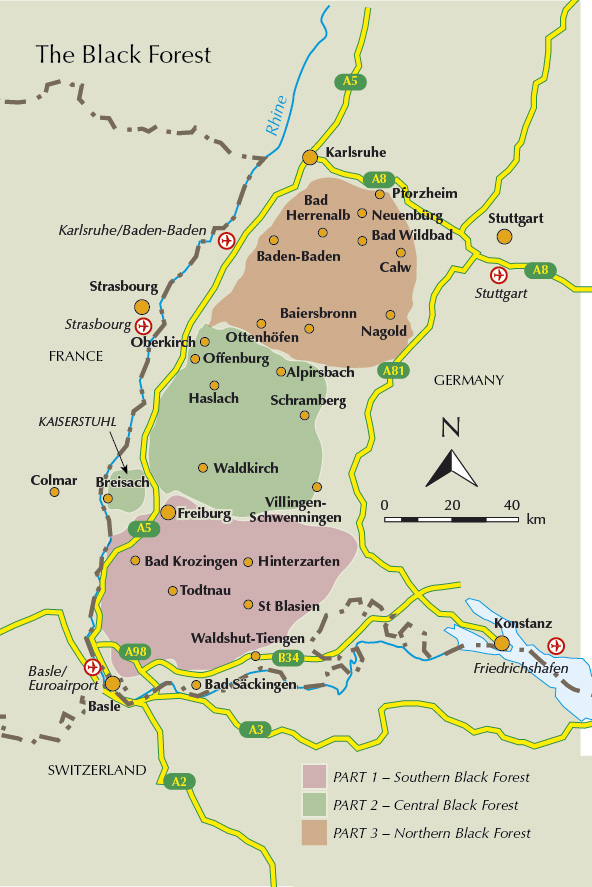

A long view of Mnstertal (Walk 3)
INTRODUCTION

A flower-strewn Black Forest meadow in spring
The Black Forest could well be described as the epitome of picture-book Germany: ancient castles perched high above small towns with quaint old timber-frame buildings, ancient wooden farmhouses sat on the side of forest-clad hills, flower-strewn mountain meadows that make cows happy and fat, tiny wayfarers chapels inviting the weary traveller to linger for a while and take in the views, hidden gorges and impressive waterfalls, serene forests with raspberries and blueberries galore, and bald, sub-alpine mountain tops with panoramic views stretching as far as the Alps and the Vosges. An extensive trail network covers 24,000km of well-marked routes providing endless possibilities for exploring this beautiful region.
As a medium-sized mountain range, or Mittelgebirge as Germans call it, the Black Forest is not a destination for peak-baggers, but the perfect place for romantics. Instead of trying to impress with superlative landscapes it seduces the visitor with its unpretentious charm and authenticity rooted in age-old traditions and colourful heritage.
There are few places that manage to blend so well an old-world charm, which lets you forget the troubles of the modern world, with a superb and well-maintained infrastructure providing all the conveniences to which we have grown accustomed.
And yet, the Black Forest has a lot more to offer than just pastoral peace and quiet. Blessed with an abundance of curative hot springs it has been an oasis for wellness seekers since pre-Roman times. Spa tourism culminated during the 18th and 19th century. Back then only the rich could afford such luxuries, but today they are affordable for anyone. What could be more restorative than to relax in a pool of hot soothing waters after a long days walk?
If you like walking for pleasure, enjoy the harmonious interplay between nature and culture, appreciate fresh produce and regional specialities, and value a good nights sleep in a comfortable bed, you will love the Black Forest.
Last, but not least, the Black Forest is a budget-friendly destination. Contrary to popular belief, Germany is one of the least expensive countries in Western Europe, yet offers some of the highest standards of infrastructure, quality and service.
Geology

Karlsruher Grat volcanic fissure (Walk 8)
The Black Forest lies deep in the southwestern corner of Germany. It stretches from Pforzheim in the north down to the Swiss border, between Lake Constance and Basle. As mountain ranges go, it is quite old, with its bedrock of granite and gneiss originating more than 200 million years ago from volcanic activity. When the region was submerged under a shallow and warm inland sea it became covered with sedimentary deposits. Countless generations of corals and crustaceans lived and died in these waters, forming thick layers of calciferous deposits. The best place to see these layers is Wutach Gorge, in the southeastern corner of the region, where the River Wutach has carved a geological timeline into the rock (Walk 6).

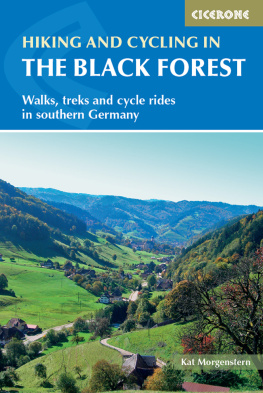
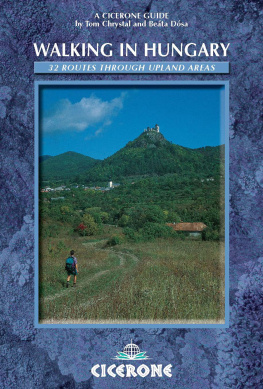
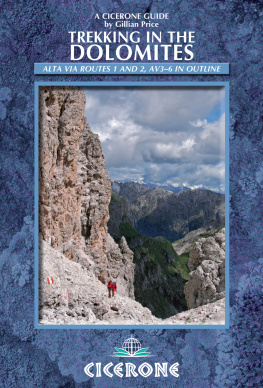

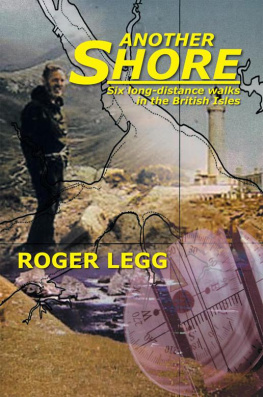



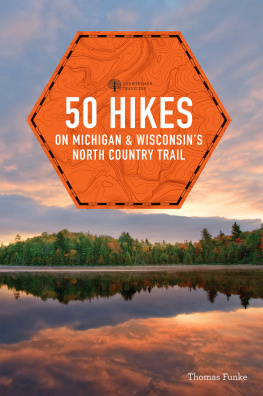

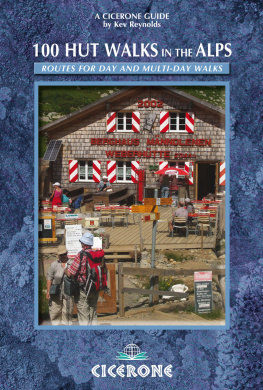


 Base mapping by Lovell Johns www.lovelljohns.com
Base mapping by Lovell Johns www.lovelljohns.com



